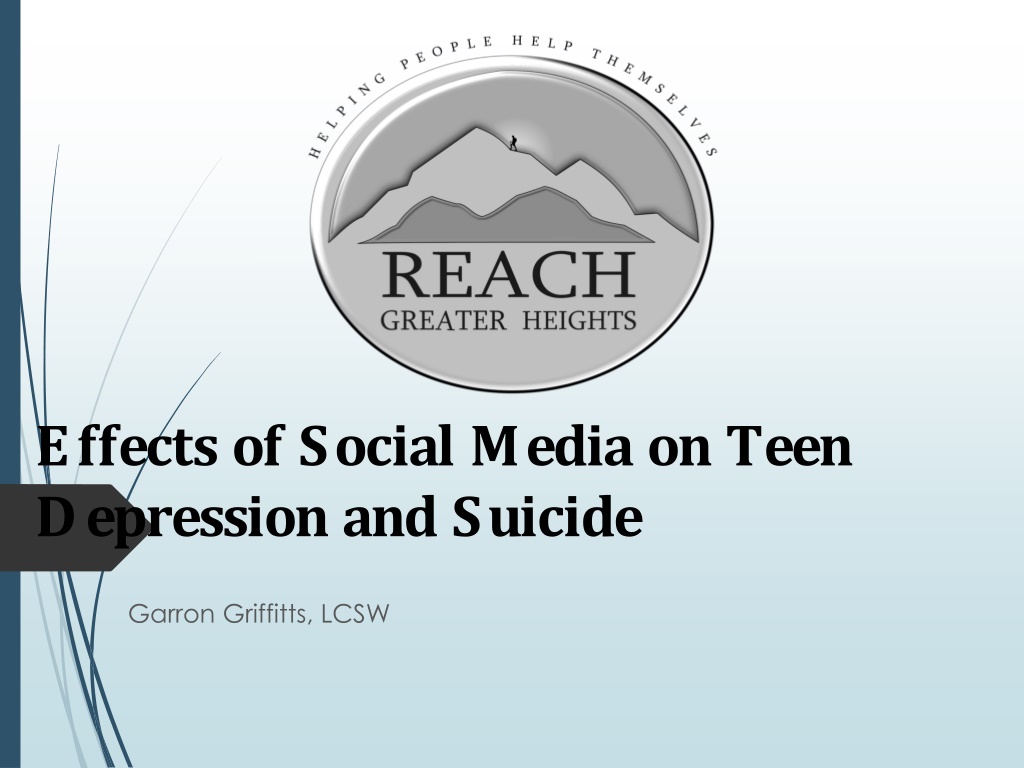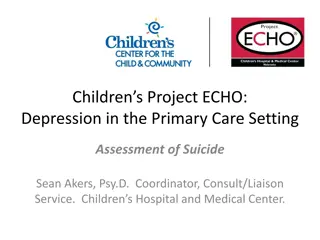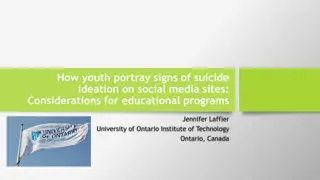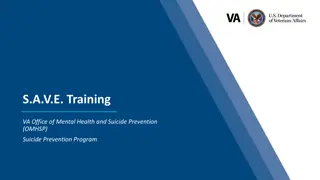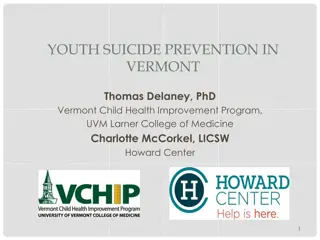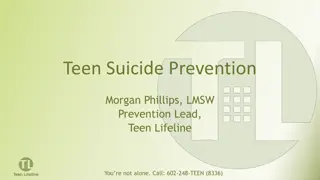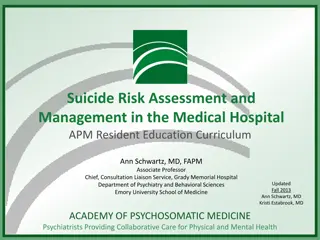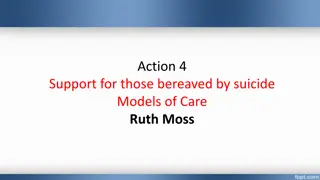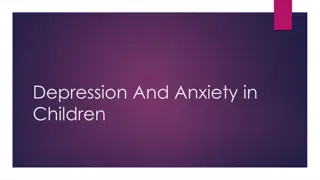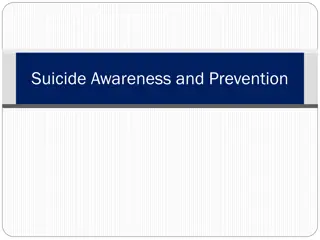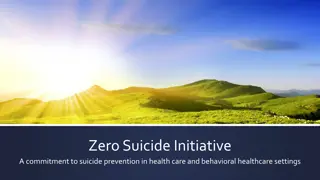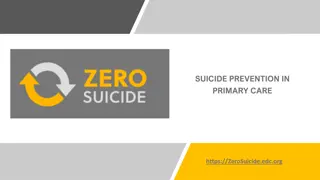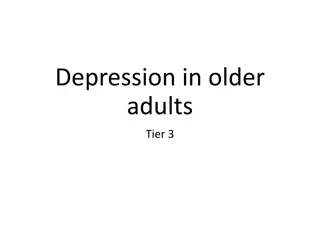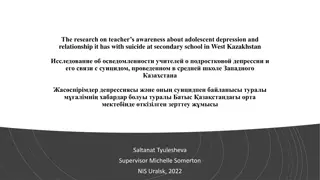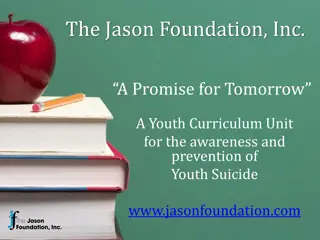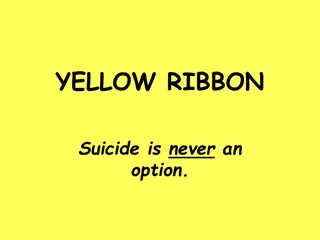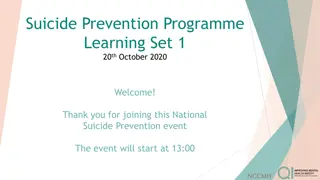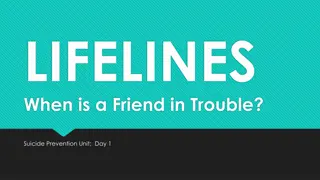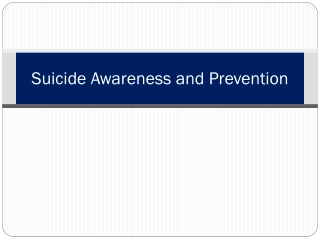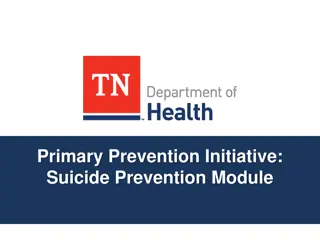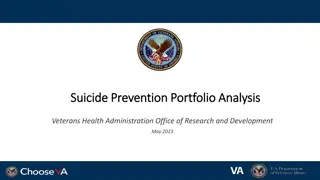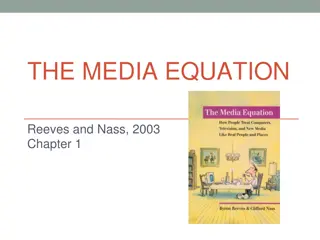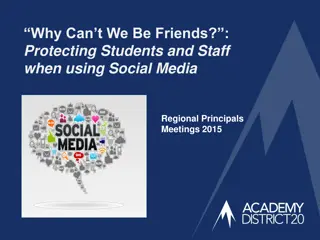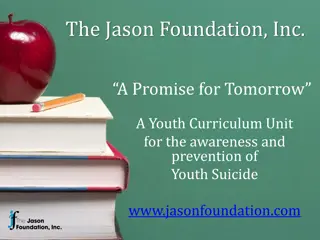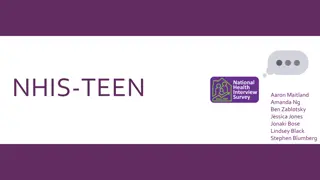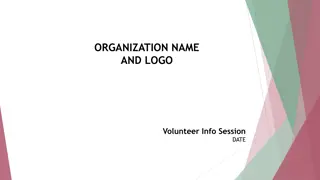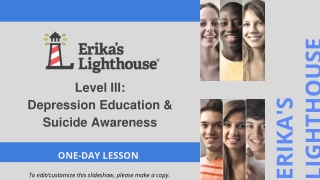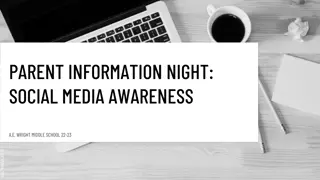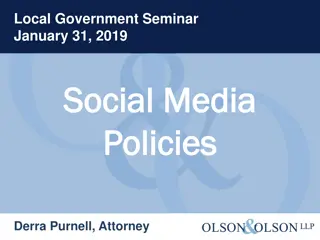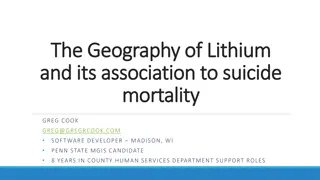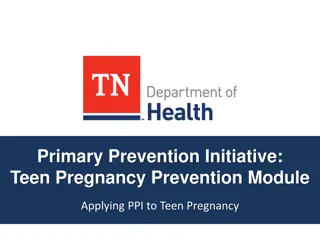Impact of Social Media on Teen Depression and Suicide
Research findings highlight a concerning trend between social media usage and increased rates of teen depression and suicide, particularly among adolescent girls. While a correlation is evident, various risk and protective factors play a role in influencing mental health outcomes. Factors such as parental depression, peer relationships, and self-esteem contribute to the vulnerability of teens, underscoring the need for supportive environments and positive coping mechanisms. Understanding the complexities of these interactions can inform strategies for promoting adolescent mental well-being in the digital age.
Download Presentation

Please find below an Image/Link to download the presentation.
The content on the website is provided AS IS for your information and personal use only. It may not be sold, licensed, or shared on other websites without obtaining consent from the author. Download presentation by click this link. If you encounter any issues during the download, it is possible that the publisher has removed the file from their server.
E N D
Presentation Transcript
Effects of Social Media on Teen Depression and Suicide Garron Griffitts, LCSW
2010-2015 33% increase in depression 65% increase in girls suicides 2007 smart phones introduced 2015: 92% of teens and young adults had one 2009 50% H.S. Seniors visited SM site daily Today: 85% San Diego State University psychologist Jean Twenge.
Correlational not causal !
My Findings School: Grades and what to be and do Social: Fitting in, Relationships, Social media Family Culture Religion Trauma Sexuality
Risk factors Female Parental Depression Divorce Low self- esteem Peer rejection Parent-child conflict Anxiety Poor academics Single parent family (for girls only) Poor social skills Poverty Need for approval School Stress Abuse
Why? Less emotionally satisfying and less connection: Not the same as face to face interaction Comparing Less active Less accomplishments/productivity Concentration: Multitasking Sleep deprivation
why? Addictive but not satisfying longterm
Junior High Freshman/Sophomore Junior/Senior
Protective Factors Positive physical development Academic achievement High self-esteem Emotional self-regulation Good coping skills and problem solving skills
Protective Factors Engagement and connections in two or more of the following contexts: school, peers, athletics, employment, religion, culture Structure, limits, rules, monitoring Supportive relationships with family members Clear expectations for behavior and values
What can be done? Balance Turn of notifications Teach mindful use of social media Model balance Phone free time before sleep. Put the phone away one hour before going to bed
What can be done? Limit the amount of leisure time spent in front of a screen to two hours a day (not including time to do homework) Prohibit cell phones at dinner. It s a way to enforce good quality time together (this is assuming that you have dinner together) Track their screen time Make time for face-to-face interaction
